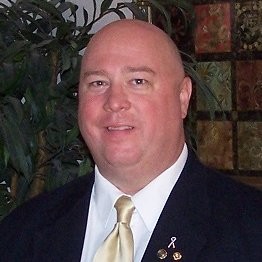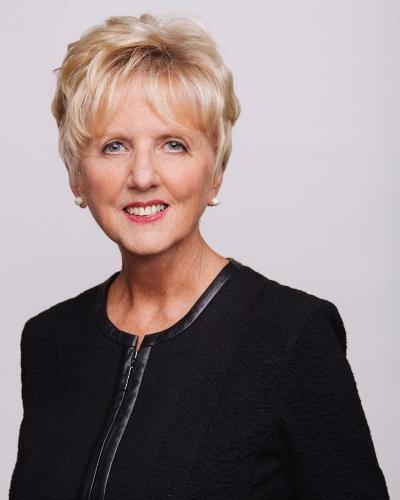It’s almost halfway through 2025, and the ripple effects of last year’s economic distress is still felt across America. Countless companies—big and small—were forced to restructure, tighten budgets, and let go of team members. While layoffs might have been necessary to stay afloat, they’ve left behind a quieter, more cautious workforce. And the result… employees are hesitant to take risks, propose bold new ideas, or challenge the status quo.
Why? Because employees are unsure if anyone is listening—or if speaking up might put them at risk of being laid off.
But here's the critical truth: if your company isn't innovating, it's falling behind. As leaders, it’s time to move beyond the triage of layoffs and begin cultivating a resilient, forward-looking, and innovative culture once again.
In the aftermath of layoffs, companies often experience a psychological freeze. Talented employees begin to question their value. Communication gaps grow wider. New ideas are seen as risks instead of opportunities. And leaders, scrambling to stabilize, often neglect a key ingredient of success: psychological safety.
Bob manages a cross-functional team at a mid-size tech company in Chicago. In Q4 of 2024, his company cut 20% of its workforce. While Bob retained all his team members, the atmosphere shifted drastically.
Where once his team ideated freely in brainstorming sessions, now meetings were filled with silence. People stopped volunteering for stretch projects. Even casual Slack messages became more formal and distant.
When Bob reached out to HR and upper leadership, they were just as unsure. The company still hadn’t solidified its 2025 goals. Some departments were moving in different directions, and communication was fragmented. Leadership was nervous about clashing visions—so they avoided committing publicly to any strategy.
Bob realized two things:
- His team felt like they were walking on eggshells.
2. His company was drifting, lacking clarity and cohesion.
So he decided to lead from where he stood.
Step 1: Clarify the Vision—Even If Others Don’t
One of the biggest mistakes post-layoff organizations make is failing to reset the vision. Employees are left wondering: “Why am I here? What are we even trying to accomplish?”
This is especially frustrating for employees still waiting to hear what the company’s goals are—even though we’re halfway through 2025.
Bob decided to take initiative. He sat down with his leadership team and asked:
- “What are our top three business priorities for the next six months?”
- “Where does our team fit in delivering on these?”
- “Who is responsible for communicating this company-wide?”
Once he had clarity (even partial), he shared it with his team in a direct, transparent way.
Step 2: Remind People Why They Are Still Here
After layoffs, employees often feel “lucky” to still have a job—but that sentiment quickly shifts to anxiety. Why wasn’t I laid off? Am I next? This leads to disengagement, not gratitude.
Bob took a personal approach. He scheduled 1-on-1 goal-setting meetings with each team member and shared:
- Specific reasons why they were retained
- Their unique strengths and value to the team
- What growth he envisioned for them in 2025
This wasn’t empty praise. It was rooted in truth. By reinforcing their purpose, Bob helped rebuild his team’s confidence.
Step 3: Rebuild Psychological Safety Through Action
Telling people they’re safe to speak up isn’t enough. You have to prove it—with your reactions, your language, and your culture.
Bob noticed that in meetings, people rarely spoke first. So he started modeling vulnerability. He admitted when he wasn’t sure about a decision. He actively solicited pushback. And most importantly, when people did share ideas—even ones that wouldn’t work—he thanked them and asked follow-up questions.
Soon, others followed suit.
How-To: Create Micro-Signals of Safety
- Say “that’s a great insight—tell me more” instead of “we already tried that.”
- Praise effort, not just outcomes.
- Reward calculated risk-taking, even when the idea doesn’t pan out.
Step 4: Make Internal Mobility Real
Another innovation killer? Stagnation. After layoffs, promotions and lateral moves often freeze. But people need momentum to feel hopeful and motivated.
Bob worked with HR to reopen some cross-functional project opportunities and mentorship pairings. In addition, he encouraged members of the leadership team to join executive mastermind groups to be paired with executives in other companies and departments to gain fresh perspectives, share best practices, and rebuild their strategic confidence by learning how peers were navigating similar post-layoff challenges.
He encouraged employees to:
- Apply for internal task forces
- Shadow teams in other departments
- Suggest projects aligned with strategic needs
Step 5: Break the Silence From the Top
Bob also recognized a broader issue: employees were afraid to share new ideas because they weren’t sure what leadership actually wanted.
So, he escalated this concern. He advocated for the C-suite to host a company-wide Town Hall where they could:
- Publicly share the 2025 goals
- Reinforce shared values
- Invite input and questions from all departments
This meeting was a turning point. It didn’t answer everything, but it showed employees that leadership wasn’t hiding in silence. That alone helped shift the culture from fear to openness.
The Results
By Q3 2025, Bob’s team was not only more confident—they were creating again. They launched a pilot product feature based on employee input. They beat sprint deadlines. And they had the highest employee engagement scores in the company.
All of this came from clarity, connection, and a culture of safety.
Bob didn’t wait for top-down permission. He led from where he stood, and in doing so, re-ignited a team that was once paralyzed by fear.




































































